Our time here in Argentina is drawing to a “pause”… The end of the first campaign is within sight and most of our teams are on their way home. We, however, still have 2 weeks left in Argentina, what is work without a little bit of play?? But I leave our holiday plans for the next post, first I will say a bit about the last couple of days…
Our last dedicated research flight of phase 1 landed yesterday. We were flying south to the Antarctic Peninsula where we probed some old vortex air. The air we probed was estimated to be about 3 years old (meaning the air has not been in contact with the surface for the last 3 years). This is of interest to us as we can study air that has gone through a lot of chemical reactions to get rid of all the surface polluters (except of course the long-lasting ones like CFC’s).
The second last flight was of particular interest to me… This was the first flight I can say I single-handedly planned, organised and executed. This plan was of particular interest to me as a result of the Sudden Stratospheric Warming (SSW – mentioned in earlier posts). In short, the SSW is the breakdown of the strong winds around the poles (polar vortex). This breakdown results in air sinking and warming in the descent to the lower part of the stratosphere. SSW’s are known to affect surface weather from cold fronts to tropical convection. Thus, this stratospheric air influences surface weather by air from the stratosphere flowing into the troposphere at certain tropopause folds. Such a tropopause fold with old air of about 2years old above it was the aim of this flight… Extremely interesting to me at least…
aside from science, the team was busy with doing presentations at the local university, doing media interviews, and giving many tours of the aircraft and instruments to local groups. Here is a photo of a group from the local university who requested a tour of the aircraft…
For those of you who wondered, this is what the inside of HALO looks like. Sensors and equipment wherever you look…

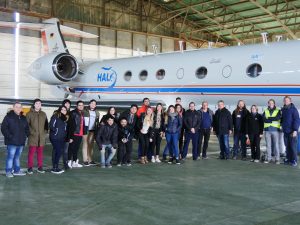
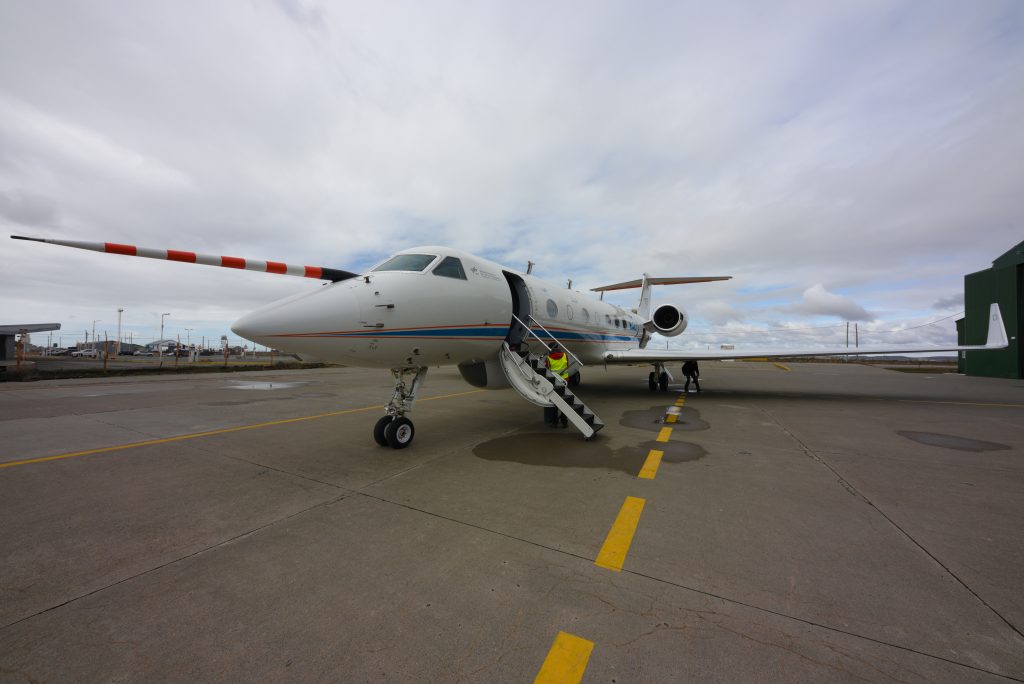
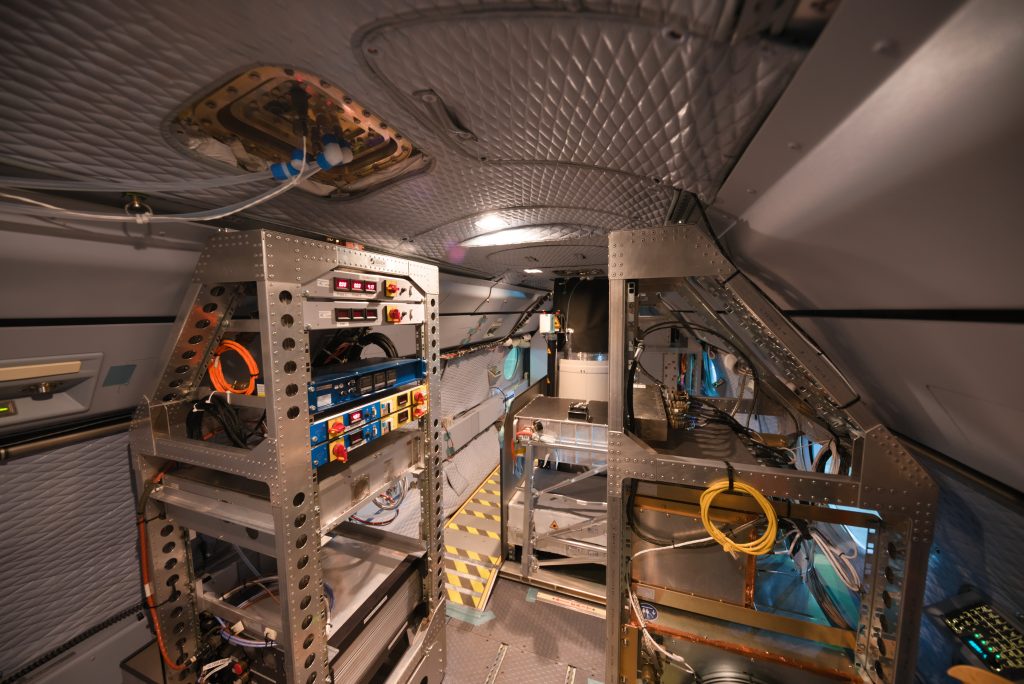
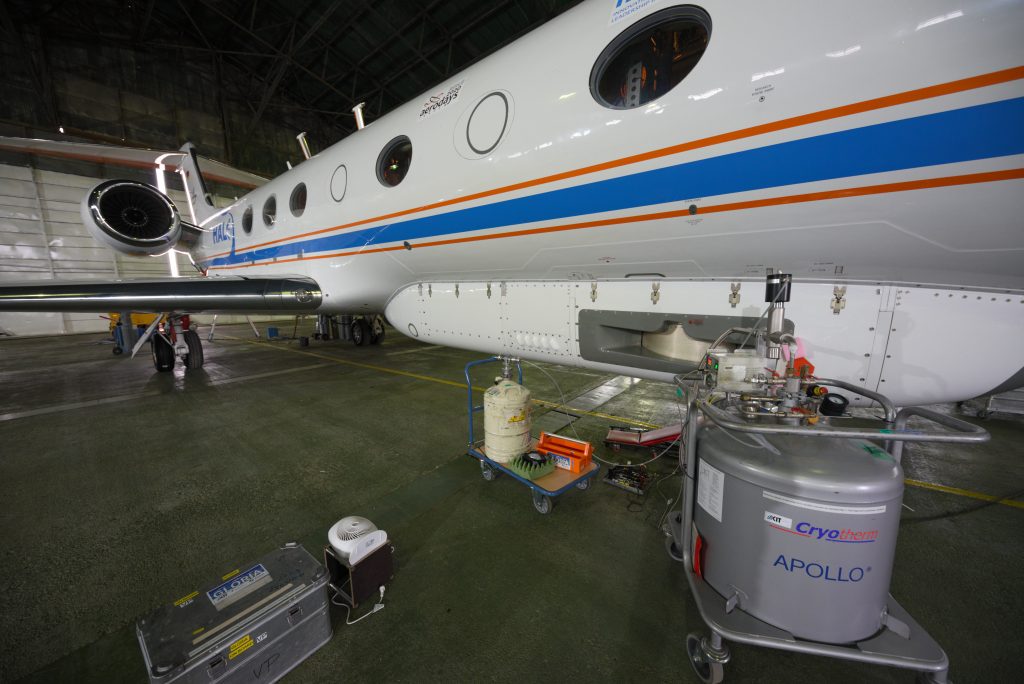
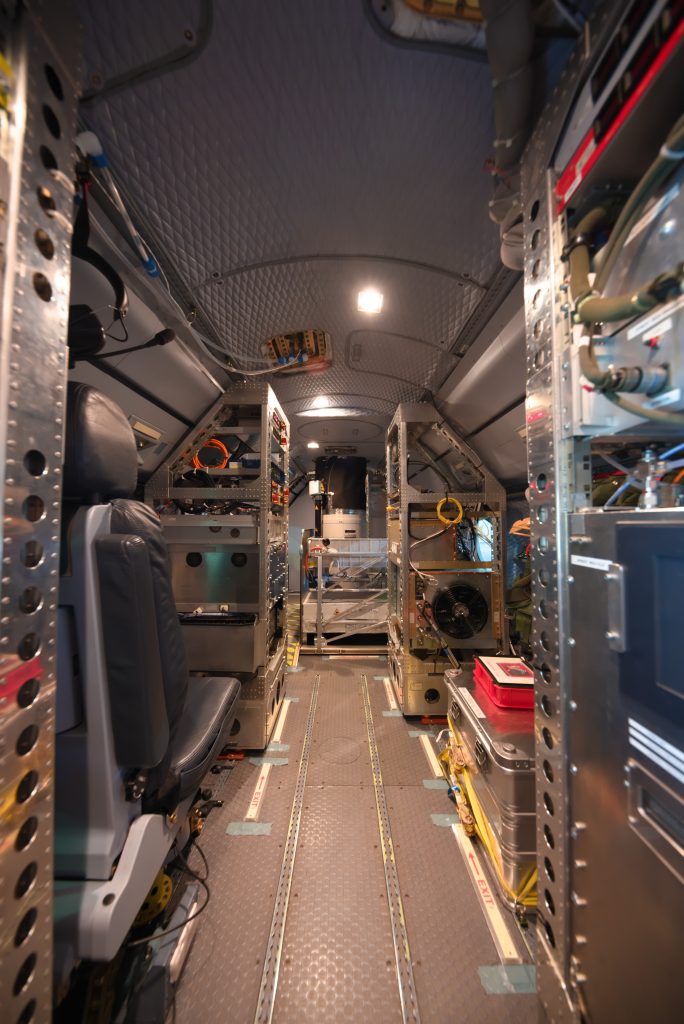
No Comments
Be the first to start a conversation